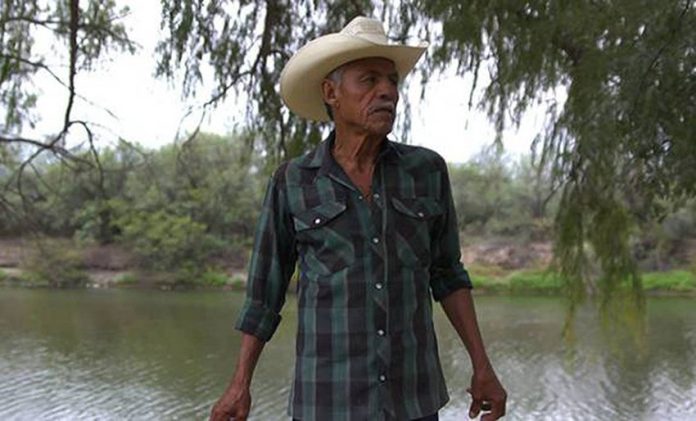A highlight of this year’s Morelia Film Festival, which opens tomorrow in the Michoacán capital, will be Roma, the Alfonso Cuarón film that wowed critics at the Venice Film Festival earlier this year, winning its top award — the Golden Lion.
But another film, rather less known than Roma, will also be one to see.
The haunting and sensorial Mexican documentary A Morir a los Desiertos by Marta Ferrer presents a brief look into the lives of Antonio Valles, Fidel Elizalde and Genaro Chavarría, Los Cardencheros de Sapioriz, three elderly singers in a tiny town in northern Mexico.
The men are three of the last remaining canto cardenche singers, a traditional music that hails from the Laguna region, which incorporates parts of Durango, Coahuila, Zacatecas and Chihuahua states.
The name of a cactus spine (cardenche) that hurts more coming out than going in seems appropriate for a music that invades your ears and gets hold of your mind. Suddenly you can’t remember why you are sad, but you feel your heart breaking. Hearing it for the first time is like a cold trickle of water slipping down your spine.
Somewhere between lined-out hymnody singing of Appalachia and early American folk music, canto cardenche is characterized by whining, drawn-out melodies and pregnant pauses sung by a collection of voices (usually three) with zero instrumentation and just a little local moonshine (sotol) to lubricate the throat.
The songs originated with Mexican peasants from the end of the 19th and beginning of the 20th century who worked essentially as slaves on large local cotton plantations and mines. The music was a balm to the heavy burden and extreme poverty suffered by the workers and their families.
The songs are replete with love, loss and the suffering of daily life. There is fear that when the last members of the generation of singers dies, the songs and the singing style will be lost forever.
Ferrer’s film follows these singers and tells not only the story of the music but also the individual grief and sorrow of each man and the slow decline of the town where they live. The landscape is desolate, in a community with few families and even fewer opportunities, an ambiance Ferrer describes as “atmospheric and sensorial.”
The film captures the dreamy solitary moments of the small desert town — a teenager on the train tracks at dusk, hot afternoon sun filtering through an open window — punctuated by the reminiscing conversations of longtime residents, and songs, so strong and clear they are like glass breaking.
“I remember the sensation of listening to the Cardencheros for the first time, or the first time that the passing Flor de Jimulco train echoed through my eyes and my heart,” says Ferrer. “I learned so much from them about the cathartic joy of expressing something so profound without overthinking it.”
A Morir a Los Desiertos, which has already won awards in Mexico and abroad (including best documentary at the Toulouse Latin America Film Festival and the Los Cabos’ Art Kingdom award), takes its names from one of the canto cardenche songs:
Yo ya me voy a morir a los desiertos,
(I’m off to die in the desert),
Me voy dirigido a esa estrella marinera,
(I’m following this sailor’s star),
Solo en pensar que ando lejos de mi tierra . . . (Just thinking of how far away I am from home . . .)
Nomás que me acuerdo me dan ganas de llorar.
(Just remembering, makes me want to cry).
The heartache in these songs will make the viewer want to cry too.
The importance of a film like this is not only the beauty that it exposes to the world, but also to serve as a living record of something that may disappear within our lifetime. Viewers aren’t left completely hopeless, there is a small light at the end of the tunnel for canto cardenche, but it does give you the sensation of having watched something rare and endangered. After six years of intense work, A Morir a los Desiertos will have its public debut in Morelia.
The festival will run from Sunday, October 21 to Sunday October 28 and feature the best of the best of Mexican filmmaking of 2018. As well as Roma festival-goers will see Museo, the new film by Mexican actor and director Gael García Bernal.
The 15-year-old festival was founded to support Mexican films and filmmakers and has become one of Latin America’s most important. The four awards categories for 2018 are Mexican short film, Mexican documentary, Mexican feature flm, and a special section for filmmakers that live in the festival’s hosting state, Michoacán.
A Morir a los Desiertos will be playing on Thursday, Friday and Saturday. If you are ready to hear and see something achingly beautiful, it should be on your list.
Lydia Carey is a freelance writer based in Mexico City.
